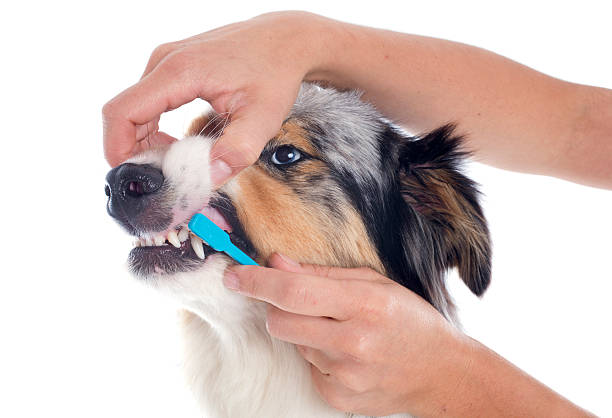Recognizing the signs of gum disease in dogs is crucial as it can cause discomfort, dental issues, and potentially develop into more serious health concerns if not addressed promptly. By understanding how to identify these signs, you can take preventive measures and avoid potential long-term complications.
Cause of gum disease in dogs
The primary cause of gum disease in dogs, also known as periodontal disease or gingivitis, is bacteria. Similar to humans, periodontal disease occurs when bacteria, along with food, saliva, and other particles, form a sticky film called plaque on the teeth. As a response, your dog's immune system releases enzymes to combat the plaque, which can inadvertently break down gum tissue. If left untreated, periodontal disease in dogs can lead to inflamed gums, tissue damage, and the progression of gum disease.Symptoms of gum disease in dogs
It's important to regularly inspect your dog's gums and mouth for any indications of gum disease. While bad breath is the most noticeable symptom, there are other signs to watch out for. These include reddened, bleeding, or swollen gums, the presence of crusted yellow-brown tartar or plaque on the teeth, and excessive drooling. In addition to visible symptoms, changes in your dog's behavior can also indicate gum disease. Depending on your familiarity with your dog's habits, you may notice difficulties in picking up food or unusual noises while eating. You might also observe blood in their water bowl or on chew toys, as well as an increase in nasal discharge or the production of thick saliva.Complications of periodontal disease in dogs
While the early symptoms of gum disease in dogs may be subtle, it's crucial not to overlook them, as the condition can worsen over time. If left untreated, the bacteria responsible for gum disease can enter the bloodstream, leading to potential complications and an increased risk of heart, kidney, or liver disease. Therefore, it's essential to take notice of any unusual symptoms and promptly discuss them with your veterinarian. Regular check-ups are also important as they enable early detection of milder symptoms, allowing your vet to intervene and prevent the disease from progressing.
What is the treatment of gum disease in dogs?
If you notice any of the signs or symptoms of gum disease in your dog mentioned above, or if you have any concerns, it is important to take your dog to the veterinarian for an examination. Some of the bacteria causing gum disease may be hidden below the gum line, and a dental X-ray can provide a clearer picture of the extent of the bacterial damage.
Treatment for gingivitis or gum disease in dogs typically requires a visit to the vet. They will often begin by cleaning your dog's teeth to remove plaque or tartar buildup. Depending on the findings from the X-rays, antibiotics may be prescribed, and in more severe cases, tooth extraction may be recommended.
Is gum disease in dogs preventable?
One of the first steps in preventing gum disease is to incorporate teeth brushing into your dog's daily routine. This not only helps maintain oral hygiene but also provides an opportunity to check for any abnormal symptoms that may require veterinary attention, such as bleeding or swollen gums, or loose and cracked teeth. During playtime, it's important to be mindful of the items your dog bites or chews on. Remove any hard objects that could potentially harm their teeth and opt for softer toys, especially if your dog has a history of dental issues. Consulting with your vet can help you identify dog toys that are more suitable for promoting good dental health.





